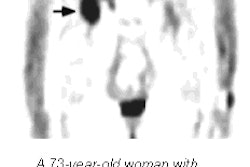CHICAGO - Dedicated breast MRI has proven its worth for further evaluation of patients with known malignancies, according to a presentation Sunday at the 2001 RSNA meeting. Dr. Lara Hardesty from Magee Women’s Hospital, University of Pittsburgh School of Medicine said her group found MRI was useful for assessing the extent of disease and residual disease, as well as pinpointing unknown primary cancer.
Using a 0.5-tesla dedicated breast MRI, 88 patients were imaged from September 1998 to February 2000. Among the 88 patients, 72% were assessed preoperatively for extent of disease and 19% were looked at postoperatively for residual disease. The remaining 9% underwent MR exam because they had clinically palpable lesions, but negative mammography and ultrasound results, Hardesty said.
After scanning, 86% of the MR images obtained to judge extent of disease showed only the known cancer, thus supporting breast conservation surgery. Additional suspicious findings showed up on 14% of the MR exams.
"These suspicious MRI findings prompted two additional breast MR scans and seven additional focused breast ultrasound scans," Hardesty said. "As a result, eight additional image-guided biopsies were performed, which identified three additional carcinomas in two patients and changed the course of treatment from segmental mastectomy to mastectomy in both."
For determining the extent of residual disease, 71% of the 17 MR exams revealed positive margin changes postoperatively. In 29% of these cases, the MRI supported re-excision of the margins. The MR imaging also prompted additional ultrasound exams and biopsies that identified residual carcinoma, leading to a change in therapy.
Finally, 50% of eight MR exams performed in patients who had normal results on other modalities showed primary breast cancer. In the majority of these cases (75%), the resulting biopsies identified primary breast cancer. These tumors were too small to be seen on mammography or ultrasound, Hardesty said.
In order to avoid confusing postoperative scar tissue with potential residual tumors, Hardesty recommended waiting 6 weeks after surgery for the MR exam.
By Shalmali PalAuntMinnie.com staff writer
November 25, 2001
For the rest of our coverage of the 2001 RSNA meeting, go to our RADCast@RSNA 2001.
Copyright © 2001 AuntMinnie.com



















